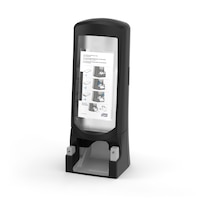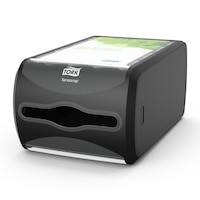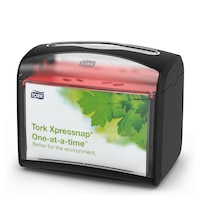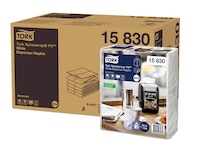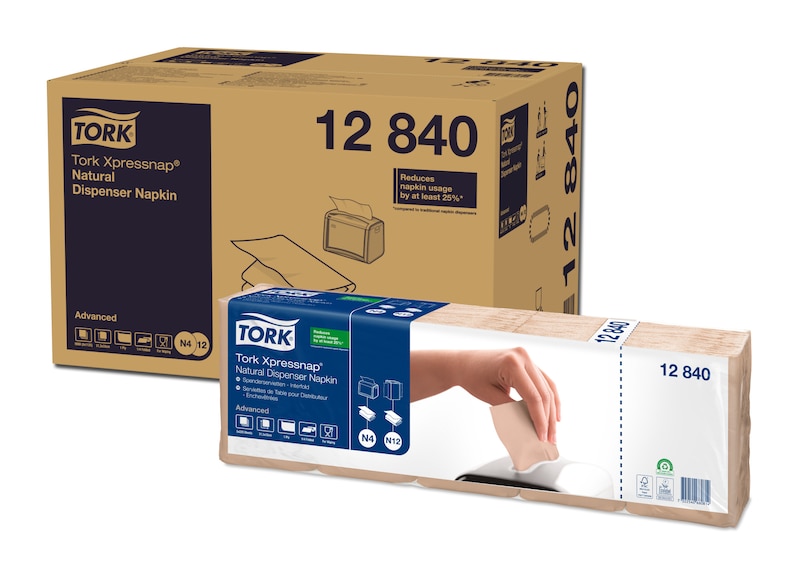

Tork Xpressnap® Natural Dispenser Napkin
Description
- Large (when unfolded) interfold dispenser napkins that are perfect for self-service restaurants.
- Help prevent cross contamination with our well-covered napkin dispensers so guests only touch the napkins they use.
- Unique pack solution, bundles are protected by a plastic bag for improved hygiene and handling
- One-at-a-time dispensing for reduced consumption and increased hygiene
- 100% recycled fibers, show that you care for the environment
- No bleaching or additional dyes brings a natural color
- Industrial compostable product
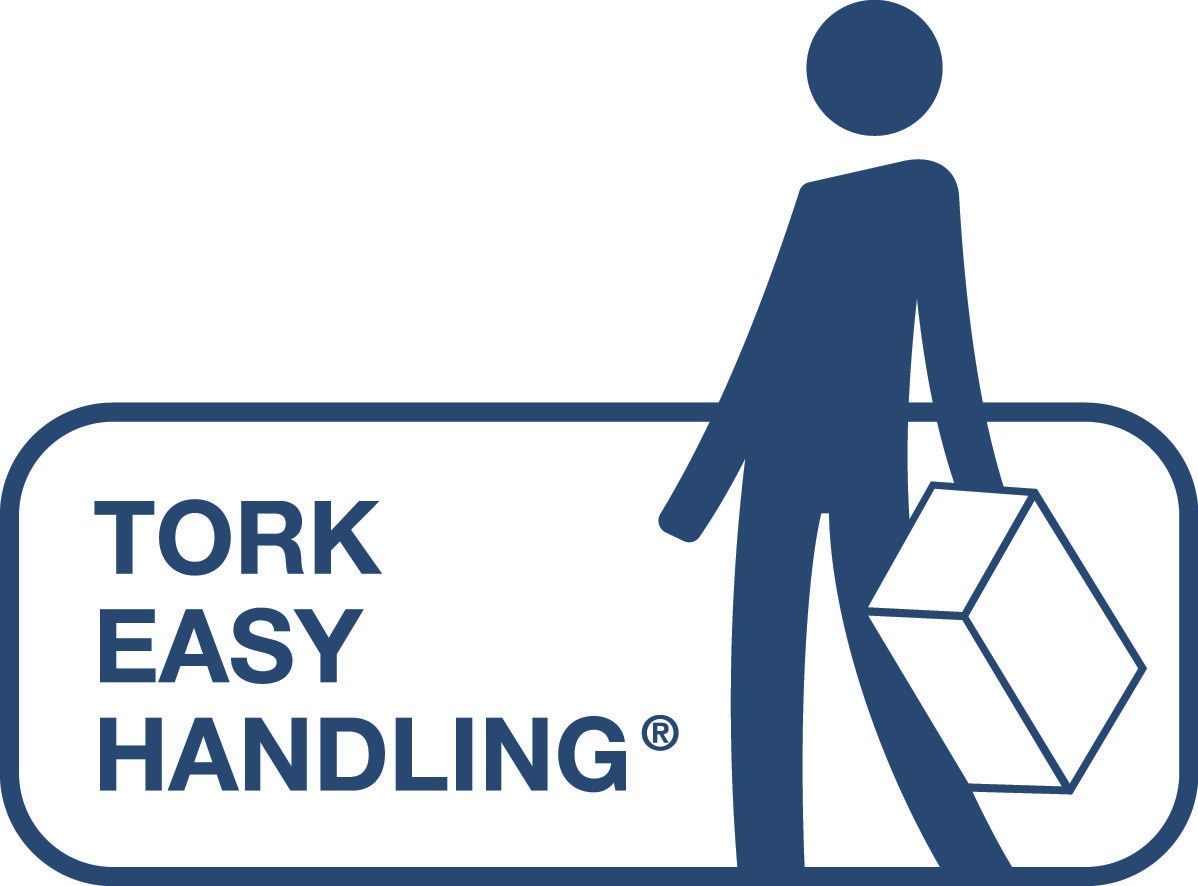
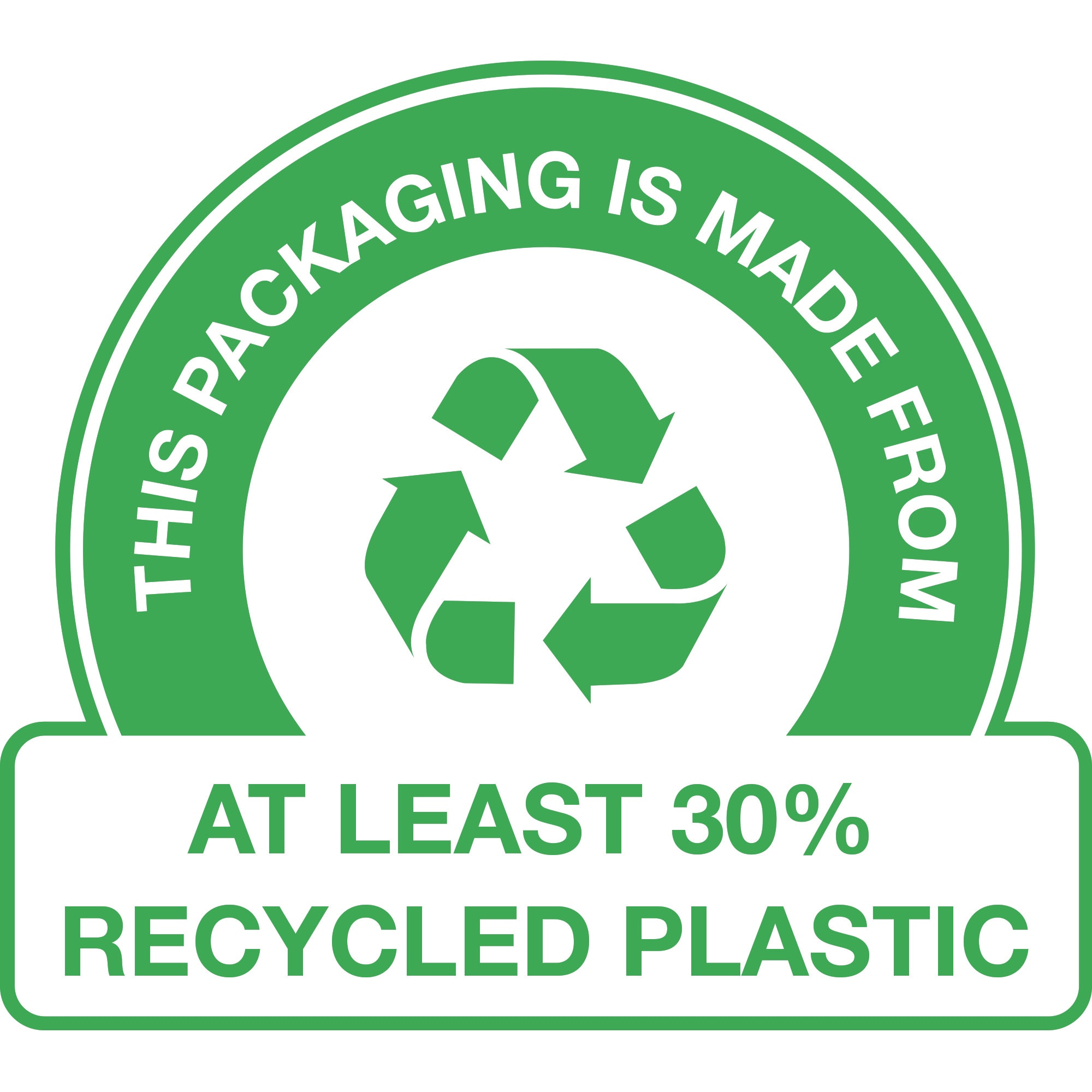
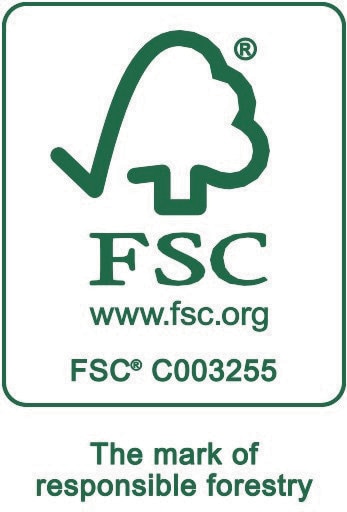
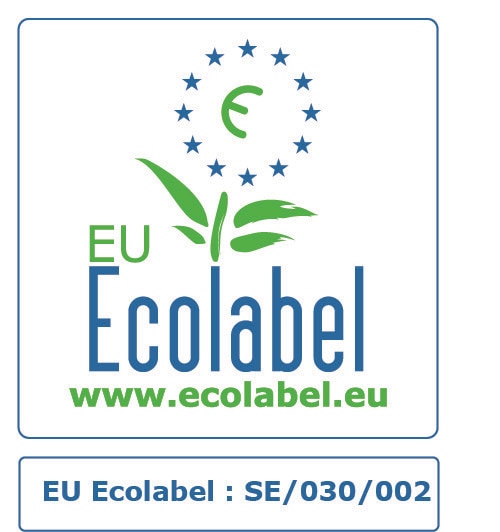
Product and delivery data
Delivery data
Carbon emission
- Tork Xpressnap® has an average cradle-to-grave carbon footprint of 3.5 g CO2e per use, with cradle-to-gate part 2.2 g CO2e per use.*******
Use and waste
- One-at-a-time dispensing helps to control consumption and reduce waste.
- Reduce napkin waste by up to 43%.*
- Reduce napkin usage by at least 25%.**
- Some of the refills are industrially compostable according to EN 13432***
Hygiene
- Highest-rated system for napkin protection and preventing cross-contamination.*****
- Refills are third-party verified for short-term food contact.
- Dispensers are certified Easy to use.******
- Tork Easy Handling® ergonomic packaging for easier carrying, opening and disposal.
Materials
- EU Ecolabel certified refills – reduced environmental impact across the product life cycle
- FSC® certified refills – made from responsibly sourced fibre
- Most of the plastic packaging for refills are made from at least 30% post-consumer recycled plastic (rest to come by end of 2025).****
- Tork Xpressnap Natural Napkin is made from 100% recycled fibres, the colour comes from recycled cardboard boxes as one of the fibre sources.
References
*Based on research comparing Tork Xpressnap Countertop system consumption and weight vs Tork traditional dispenser system (271600 with 10935)
**Compared to traditional napkin dispensers
***Check the catalogue to see individual product certifications and claims. Local restrictions may apply. Before disposal in industrial compost bins, please check with local authorities to confirm that the product is accepted. Please also ensure that the product has not been used in connection with hazardous or non-compostable substances.
****Check the catalogue to see individual product certifications and claims.
*****Xpressnap tabletop system: Based on a survey of restaurant operators comparing the upgraded Tork Xpressnap Tabletop napkin system vs leading competitors. COMPETITORS: Upgraded Tork Xpressnap napkin tabletop system compared to Tork Fastfold 271800, Lucart 892292, Katrin 22564, BulkySoft 01342, Sofidel 417201 and Tork Xpressnap 272611
******Certified by the Swedish Rheumatism Association.
*******Represents the Tork Xpressnap® European refill assortment per user occasion. Based on third party reviewed life cycle assessments (LCA) covering all refill quality tiers combined with consumption data. Because this data is a system average, it is not intended to be used in carbon reporting for specific articles and consumption.
Content
The product is made from
Recycled fibres
Chemicals
The packaging material is made from paper or plastic.
Material
Recycled fibres
Recycling of paper is an efficient use of resources as the wood fibres are used more than once.
High demands are put on quality and purity of recovered fibres, considering each step of the chain (collecting, sorting, transporting, storage, use), to ensure safe and hygienic products.
Recovered paper can be produced both from collected newsprint, magazines and office waste. The choice of recovered paper grades, is made for each product, depending on its specific requirements on performance properties and brightness. The paper is dissolved in water, washed and treated with chemicals under high temperature and screened to separate out impurities.
Bleaching is a cleaning process of the fibres that is often used. The aim is then to achieve a bright pulp, but also to get a certain purity of the fibre in order to achieve the demands for hygiene products and in some cases to meet the requirements for food safety.
Bleaching of the recovered pulp is made with chlorine-free bleaching agents (hydrogene peroxide and sodium dithionite). Except for Natural Napkins that are unbleached.
For bleached products we use bleaching agents (to increase the brightness of pulp from recovered paper).
Chemicals
All chemicals (process aids as well as additives) are assessed from an environmental, occupational health and safety and product safety point of view.
To control product performance we use additives:
- Wet strength agents (for Wipers and Hand Towels)
- Dry strength agents (is used together with mechanical treatment of the pulp to make strong products like wipers)
- For coloured papers dyes and fixatives (to secure perfect fastness of the colour) are added
- For printed products printing inks (pigments with carriers and fixatives) are applied
- For multi ply products we often use water soluble glue to secure the intregrity of the product
In most of our mills we do not add optical brighteners but it often occurs in recovered paper since it is used in printing paper.
We do not use softeners for professional hygiene products.
High product quality is secured through quality and hygiene management systems throughout production, storage and transport.
In order to maintain a stable process and product quality the paper manufacturing process is supported by the following chemicals/ process aids:
- defoamers (surfactants and dispersing agents)
- pH-control (sodium hydroxide and sulphuric acid)
- retention aids (chemicals that help to agglomerate small fibers to prevent fiber loss)
- Coating chemicals (that help to control the creping of the paper to make it soft and absorbent)
To reuse broke and to utilize recovered fibres we use:
- Pulping aid (chemicals that help to repulp wet strong paper)
- Flocculation chemicals (that help to clean out printing inks and fillers from recovered paper)
- Bleaching agents (to increase the brightness of pulp from recovered paper)
In the cleaning of our waste water we use flocculation agents and nutritients for the biological treatment to secure that no negative impact on water quality comes from our mills.
Food Contact
This product fulfills the legislative requirements for Food Contact materials, confirmed by external certification performed by a third party. The product is safe for wiping food contact surfaces and may also come occasionally into contact with foodstuffs for a short period of time.
Environmental certification
This product is certified for FSC®.
Packaging
Fulfilment of Packaging and Packaging Waste Directive (94/62/EC): Yes
Article creation date and latest article revision
Date of issue: 10-12-2021
Revision date: 31-03-2025
Production
This product is produced at Cuijk - NL mill and certified according to ISO 9001, ISO 14001 (Environmental management systems), BRC-IoP, ISO 45001 and FSC Chain-Of-Custody.










